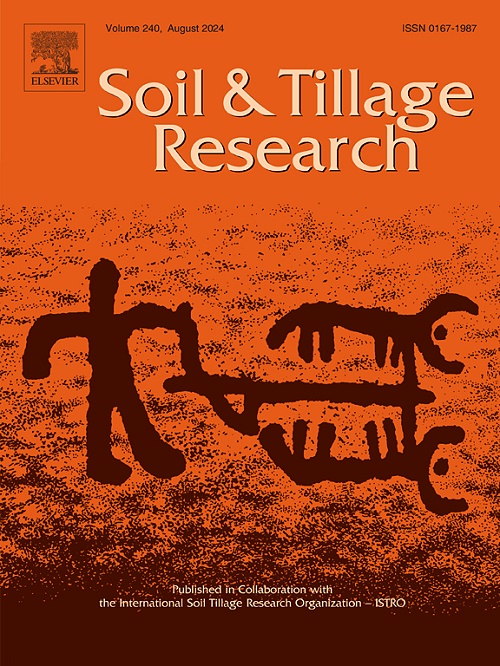Soil structure development in a five-year chronosequence of maize cropping on two contrasting soil textures
IF 6.1
1区 农林科学
Q1 SOIL SCIENCE
引用次数: 0
Abstract
The development of soil structure is a complex process driven by the interplay of physical, biological, and chemical factors. Plant roots play an important role in shaping the porous soil architecture; however, their relative contribution is hard to quantify. This study assessed root-driven structural (bio-)pore formation, its impact on hydraulic properties (e.g., infiltration capacity), and how it is influenced by soil texture (loam vs. sand). We combined X-ray computed tomography and machine learning-based segmentation to analyze 720 soil cores from a five-year chronosequence of maize cultivation without tillage. With this methodology, we showed that soil texture was the primary driver of soil structure development and the dynamics of root-derived organic matter. In loam, rapid root decomposition left an interconnected biopore network, enhancing infiltration despite soil settlement. In sand, a greater accumulation of root-derived particulate organic matter resulted from more vigorous root growth, larger diameters, and slower root decomposition. In sand, soil settlement reduced the infiltration capacity over time. These findings underscore the need to integrate organic matter dynamics into soil structure studies, with implications for sustainable land management and carbon storage strategies. Expanding this approach to diverse soils and climates could improve soil process modeling and soil management globally.
两种不同土壤质地玉米种植5年时间序列的土壤结构发育
土壤结构的发育是一个物理、生物、化学等多种因素共同作用的复杂过程。植物根系在多孔土壤结构的形成中起着重要作用;然而,他们的相对贡献很难量化。本研究评估了根驱动结构(生物)孔隙的形成,其对水力特性的影响(例如,渗透能力),以及它如何受到土壤质地(壤土与砂土)的影响。我们将x射线计算机断层扫描和基于机器学习的分割相结合,分析了720个土壤核,这些土壤核来自5年无耕作玉米种植的时间序列。通过这种方法,我们发现土壤质地是土壤结构发展和根系有机质动态的主要驱动因素。在壤土中,快速的根系分解留下了一个相互连接的生物孔网络,尽管土壤沉降,但增强了入渗能力。在砂土中,由于根系生长旺盛、直径较大、分解速度较慢,根源颗粒物有机质积累较多。在砂土中,随着时间的推移,土壤沉降降低了入渗能力。这些发现强调了将有机质动力学纳入土壤结构研究的必要性,这对可持续土地管理和碳储存战略具有重要意义。将这种方法扩展到不同的土壤和气候可以改善全球土壤过程建模和土壤管理。
本文章由计算机程序翻译,如有差异,请以英文原文为准。
求助全文
约1分钟内获得全文
求助全文
来源期刊

Soil & Tillage Research
农林科学-土壤科学
CiteScore
13.00
自引率
6.20%
发文量
266
审稿时长
5 months
期刊介绍:
Soil & Tillage Research examines the physical, chemical and biological changes in the soil caused by tillage and field traffic. Manuscripts will be considered on aspects of soil science, physics, technology, mechanization and applied engineering for a sustainable balance among productivity, environmental quality and profitability. The following are examples of suitable topics within the scope of the journal of Soil and Tillage Research:
The agricultural and biosystems engineering associated with tillage (including no-tillage, reduced-tillage and direct drilling), irrigation and drainage, crops and crop rotations, fertilization, rehabilitation of mine spoils and processes used to modify soils. Soil change effects on establishment and yield of crops, growth of plants and roots, structure and erosion of soil, cycling of carbon and nutrients, greenhouse gas emissions, leaching, runoff and other processes that affect environmental quality. Characterization or modeling of tillage and field traffic responses, soil, climate, or topographic effects, soil deformation processes, tillage tools, traction devices, energy requirements, economics, surface and subsurface water quality effects, tillage effects on weed, pest and disease control, and their interactions.
 求助内容:
求助内容: 应助结果提醒方式:
应助结果提醒方式:


